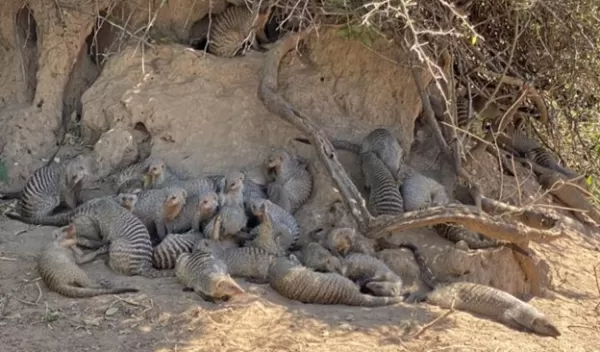
How landscape can affect disease transmission
Under a concrete drainage culvert at the edge of a town in Botswana, a troop of banded mongoose is getting ready to leave its den. Moving from shade into light, the cat-sized animals scan the area for signs of danger and for opportunities to find something to eat in an increasingly crowded neighborhood.
The genetics of this troop's members -- and others like them -- are providing researchers with a new understanding of how and why animal behavior changes in proximity to human development and how that change can affect infectious disease spread.
Scientists used genetic tools to identify changes in movement behavior among mongooses living in urban centers and natural areas, gaining important insights into how to better model disease transmission in wild animals living in complex landscapes. Results of their study, which was funded by a grant from the U.S. National Science Foundation, have been published in the journal Ecology and Evolution.
"The question has always been how do we predict what's going to happen once an infectious disease emerges," said co-author Kathleen Alexander of Virginia Tech. "By using systems that are tractable, we can begin to learn a lot more about how disease dynamics are shaped by host behavior and environmental drivers, including urbanizing landscapes."
One tractable system can be found in social groups of banded mongooses, also known as troops, that live across urban and natural areas in Botswana. Over the past 20 years, researchers have been observing the behavior of mongoose troops in the natural environment of Chobe National Park and in increasingly urban centers, such as Kasane.
Botswana's banded mongooses are ideal study subjects because they live in territorial social groups across the landscape and, in northern Botswana, are infected with a novel tuberculosis pathogen closely related to human tuberculosis.
Data obtained from microsatellite DNA markers in the genome sequence of each animal allowed the researchers to identify individuals that had moved between troops in their lifetime and to characterize the genetic makeup of various troops across the landscape. The goal was to find out how individuals are connected and how that would influence disease transmission potential.
"We live in urban areas with many other types of animals," said Sam Scheiner, a program director in NSF's Division of Environmental Biology. "Understanding how diseases spread among those animals will help in the control of human diseases."
